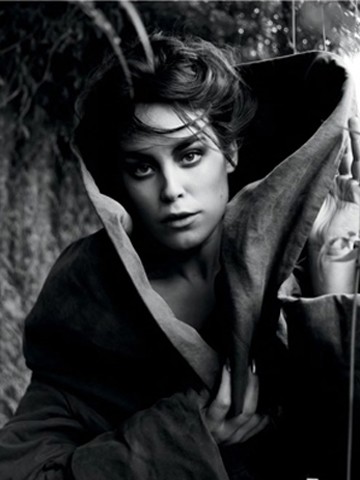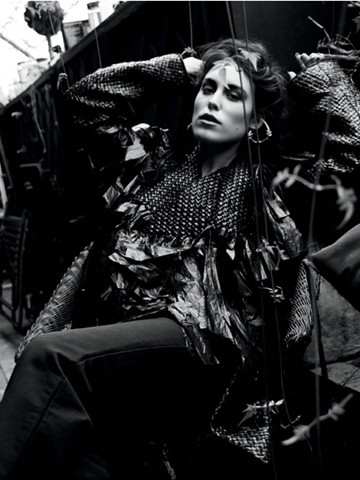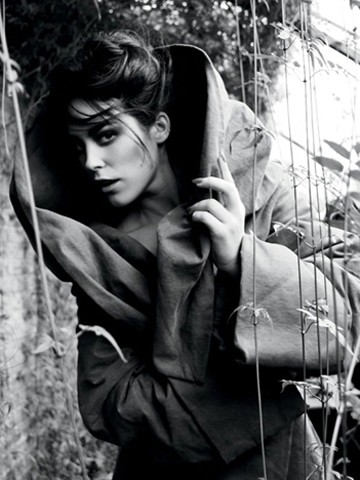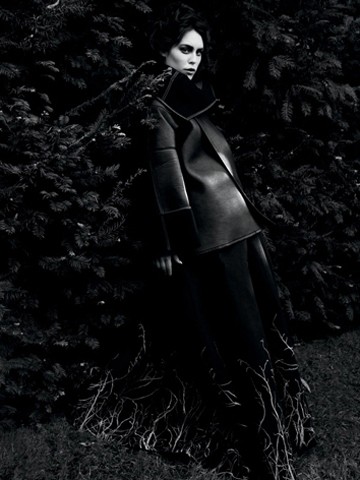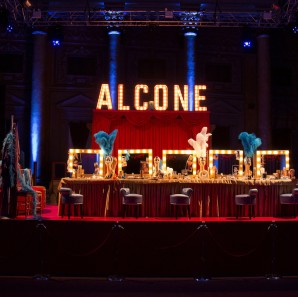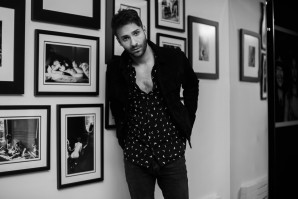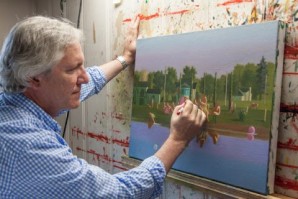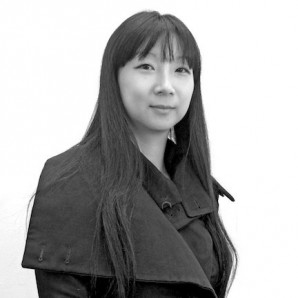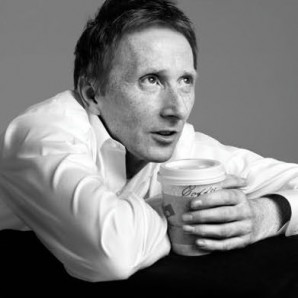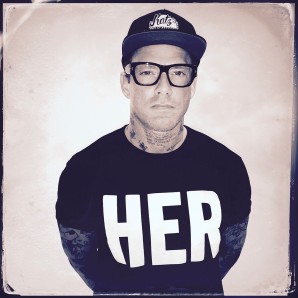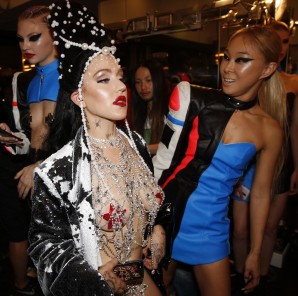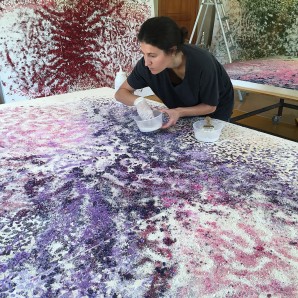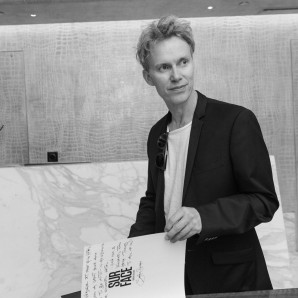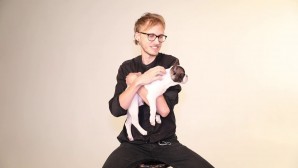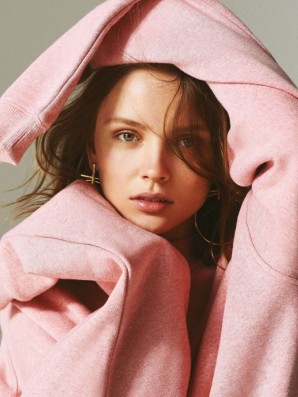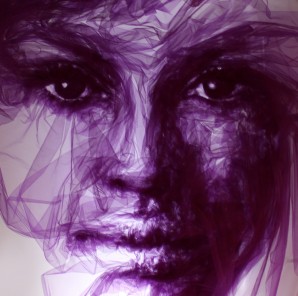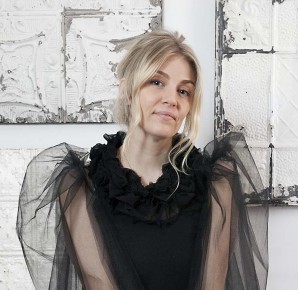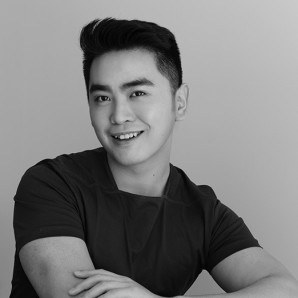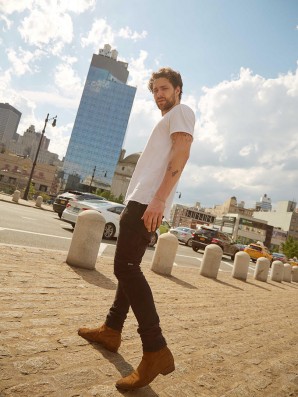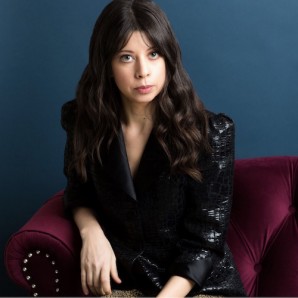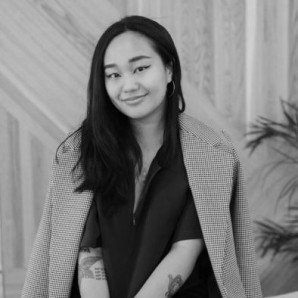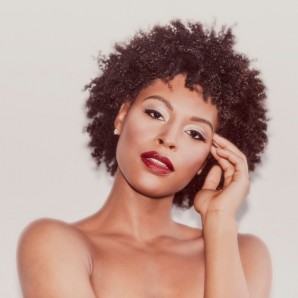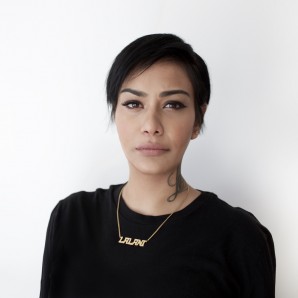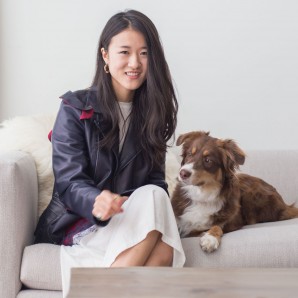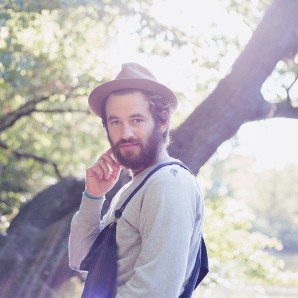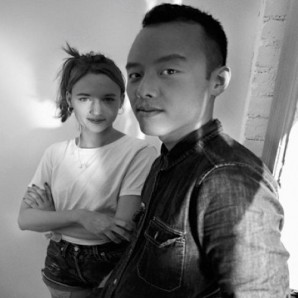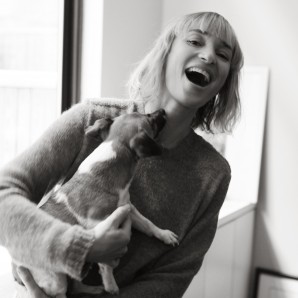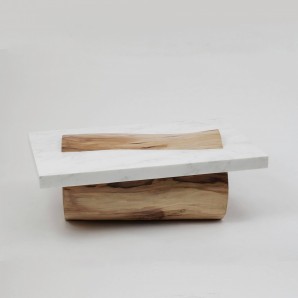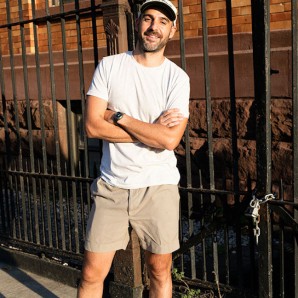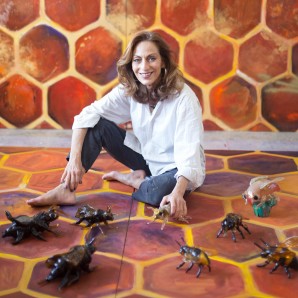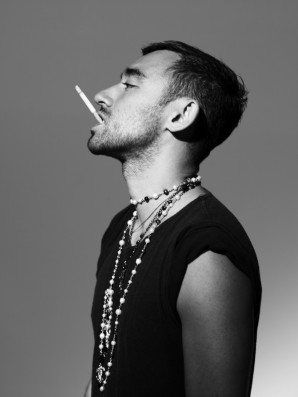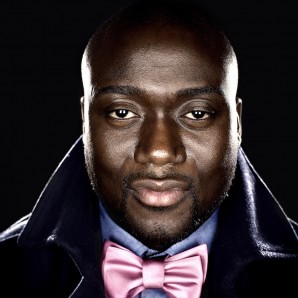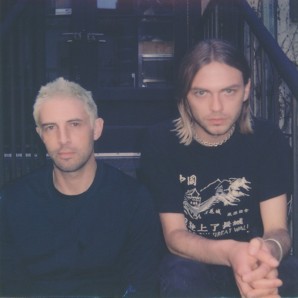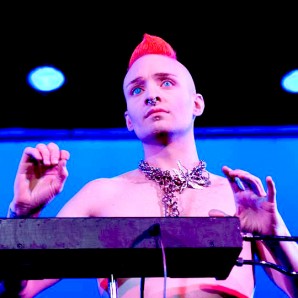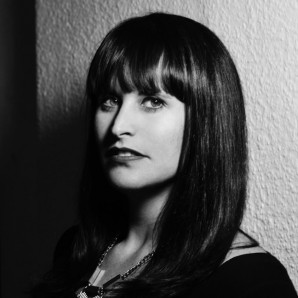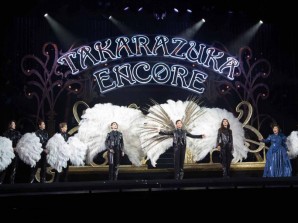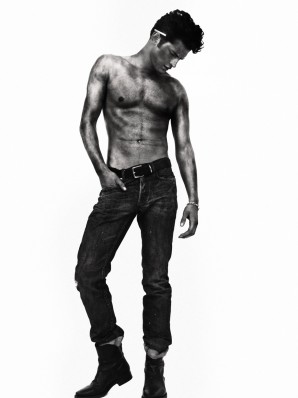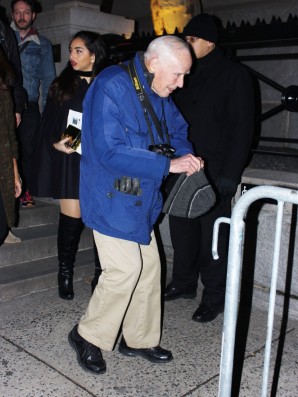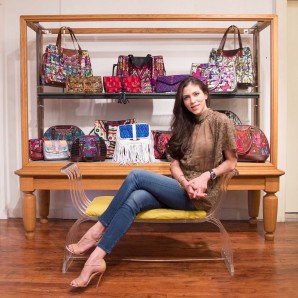No make-up company has a more storied history firmly ensconced in New York showbiz.
GARETH PUGH: ORGANIZED CHAOS
Gareth Pugh is a study in contrasts; balancing the demands of what is created and what is worn; what is in a designer’s control and what is in the hands of the wearer; what must be planned and what must be left to chaos. Recently Pugh’s work conveys a comfort level in what he does and how it exists in the larger context of fashion. No longer focused on pure shock value, Pugh recently spoke with TWELV about his creative process and the fashion industry, as well as the increasing sense of maturity exhibited in his creations. His good friend Tallulah Harlech, daughter of Chanel muse Lady Amanda Harlech and actress in Ralph Fiennes' new film "The Invisible Woman", showcases Pugh's newest designs in a lush garden in London.
What is your process in creating a collection? Do you need to contemplate an idea for a long time, do you create from instinct and a generative process, or is it a bit of both?
It’s actually a bit of both. I do tend to think about things a great deal, but there are moments- happy accidents lets say- that can trigger a whole new direction for an entire collection. It’s very dangerous, of course, to rely on these moments, so I always like to create a solid basis, a sort of abstract narrative that could be as basic as a sense, or a feeling, to work from. It is very rarely something tangible, and usually very difficult for me to communicate this narrative to anyone else, but things begin to solidify and crystallize as we work on the various elements of the show. It is very satisfying for me when all the elements come together and form a complete image.
Your work seems to be centered on a type of creative narrative, or a type of story that is communicating an abstracted idea. What role do you see that type of fashion playing in the wider scope of the fashion industry?
Everyone can relate to a story, no matter how abstract. Take away the story, and what you are left with is simply an aesthetic. An aesthetic is very easy to disengage from, while a narrative has the potential to become more ingrained, and feels like its part of something real, something physical, which ultimately is what makes fashion desirable. I would like to think that people want to be part of something that transcends the surface, and experience something that feels steeped in a certain ideology.
Where do you see fashion going in the future? Do you see artistic or conceptual approaches to fashion becoming more important?
It’s easy to feel a little despondent about fashion at the moment. I do think that there needs to be some sort of seismic shift – a total re-evaluation of what we value and look towards.
What are your views on the turnover of fashion? As an art-related designer do you wish that you had a seasonless time limit to develop ideas, or do you feel that the rigid pace of seasons keeps you motivated and focused?
Having such rigid deadlines is something that I am used to, and also think is very necessary. If I was afforded all the time in the world to work on something before letting it go, it would be impossible to actually do so. Nothing is ever perfect, and though this is a difficult lesson to learn, you very quickly realize that this sense of dissatisfaction is what spurs you on to do the next thing; a constant and never ending search for perfection. I like being able to build something up, then completely destroy it and start fresh. There is definitely something quite sadistic in this approach, yet being able to develop a visual language, and discover new ways of doing things along the way makes the process easier as time goes on.
How do you wish your customer to interact with the clothing that you create for her beyond the corporeal? What are you hoping that she feels when wearing your clothing?
Once you set something free, you lose control. What I wish for in this respect is immaterial.
What is the significance of gray, black, blue, and white in your work?
It’s simply about minimizing visual noise, and an attempt to offer an idea in its most basic form.
Many of your clothes are architectural and mathematical in structure. What is the relationship between the body and the angularity of your work?
It is more to do with a desire for control. Out of a sometimes very chaotic process comes this definite yearn for clarity. This is something that undoubtedly permeates the clothes.
You are able to deftly wrap the body in volumes of fabric without overwhelming the wearer. Can you explain the symbolism that you see behind that?
I don't like to overthink each and every aspect of what I do, that’s very important, it allows me a certain freedom to do something because it feels right, rather than constantly thinking about what it means to do it. I would argue that that’s not necessarily part of my role, as self-awareness at a certain level is an important asset, but taken too far can be very dangerous.
What designer’s work most often attracts your attention or has an influence on your own work? Do you feel it is more or less relevant to look at historical dress versus contemporary work?
That’s a difficult question to answer. I would describe my taste as that of a schizophrenic magpie.
Do you think the fashion press generally understands your work, or do you think that they miss the mark?
There are definitely certain people who get it, and who take the time to actually understand it rather than simply look, though that’s not really something that bothers me. If I'm pleasing everyone, I’m definitely doing something very wrong indeed.
You work with a lot of the same people each season in support of your fashion show presentations. Is it more collaborative in nature, or are most of the choices a part of your vision that they carry out?
I usually have very definite ideas about how I want things to be. I work with people that I like – that’s very important to me – people that I feel comfortable with and people who are able to execute these ideas.
Would you say that you have a muse? What does the term muse mean to you?
My idea of a muse is a little idealistic, and that of someone who totally and without question inhabits the fantasy. My notion of a muse goes far beyond a person who simply wears the clothes and/or has a particular attitude that fits a certain designer or collection. A muse for me is someone who sacrifices themselves, who throws themselves on the fire like a phoenix.
By: Noel Palomo-Lovinski
Photography: Jessie Craig
Hair: Isabella Boettcher @ Terri Manduca. Makeup: Natsumi Minarita @ Untitled Artists. London using MAC. Manicurist: Ami Streets @LMC Worldwide using The New Black.
*This story was featured in TWELV's Fall/Winter 2013 Issue
related posts
Alcone 65th Anniversary @Capitale: Interview with CEO Maria Stewart
Ikemen #35: Zaher Saleh
IKEMEN (ē´k´mɛn): Japanese Slang
"REALLY, REALLY, RIDICULOUSLY GOOD LOOKING PEOPLE"
Interview: Neurosurgeon-turned-Artist Keith Kattner on the Surgery of Classical Painting
Dr. Keith Kattner does not have the typical background one would expect of a successful neurosurgeon.
New Type #27: Nika Tang Interview
San Fransisco-based designer Nika Tang has emerged as boldly committed to her ideology as to her pieces. Her namesake brand centers...
Interview: Becky Donnelly's Fashion Creatures
Quirky girl from Dublin with a penchant for drawing fantasy creatures relocates to London after art school.
Kaimin Interview & S/S18 "Slut from the Future" Presentation @ the Top of the Standard
Pulsing with a heavy beat and hazy with a deep rouge glow, the Top of the Standard is as glamorous a place to be as ever. And tonight it is packed with partygoers.
Yasmina Alaoui Interview & Opera Gallery Exhibition
Yasmina Alaoui burst onto the international arts scene in 2003 with "Tales of Beauty," a collection of nude...
Søren Solkær Interview
Stepping out of a cab into the urban symphony of Midtown, the entryway to The Quin Hotel was easy to spot— with classic architecture and...
Kyra Ross of Mona Liza Studios Interview
TWELV sat down with the charismatic Kyra Ross, founder of Mona Liza Studios which falls under his larger moniker "...
Ira Sumbaeva Interview
TWELV sits down with model Ira Sumbaeva to give a glimpse into the story of the cutest Belarusian...
Benjamin Shine Interview: Master of Tulle
Benjamin Shine is an award-winning international artist whose work stretches across industries from fashion...
New Type #25: Mémère – Sarah LeBlanc Interview
Upon arriving to the Mémère studio, it felt like stepping from the bustle of New York City...
IKEMEN #34: GABRIEL LIBERTY
IKEMEN (ē´k´mɛn): Japanese Slang
"REALLY, REALLY, RIDICULOUSLY GOOD LOOKING PEOPLE"
NEW TYPE #23: ANE AMOUR – IYALA ANNE INTERVIEW
“Introducing a talented designer giving sophisticated femininity an edge”
NEW TYPE #22: Allina Liu INTERVIEW
Born and raised in New York City– we could also add, "in love with”– Allina Liu is a refreshing womenswear designer, who questions the...
NEW TYPE #21: Kendall Miles INTERVIEW
“My passion is shoes. Kendall Miles shoes are beautiful, alluring and handcrafted in Italy: the perfect pair for the woman who knows who she is and where she wants to go.”
NEW TYPE #20: Shahista Lalani INTERVIEW
"Introducing an emerging designer creating captivating leather fashions."
NEW TYPE #19: PAMPLEMOUSSE - Danica Zheng Interview
“Introducing a dedicated, innovative designer to awaken every woman’s inner voice.”
NEW TYPE #18: BOOM DONE SHOP - LIAM BERGIN INTERVIEW
“Introducing the new hot British ethical apparel brand BOOM DONE SHOP”
NEW TYPE #17: NAMILA - NAN LI AND EMILIA PFOHL INTERVIEW
NAMILIA was founded in 2015 by Berlin based designers Nan Li and Emilia Pfohl. The duo met while attending University of the Arts Berlin.
Isabel Dupre Interview
Isabel Dupre Interview is now available!
Check inside for the Full Page Interview.
IKEMEN #33: DANIEL VIEDMA
IKEMEN (ē´k´mɛn): Japanese Slang
"REALLY, REALLY, RIDICULOUSLY GOOD LOOKING PEOPLE"
Judi Harvest INTERVIEW
“We’re all bees, we need to dance more and always search for beauty,” Judi Harvest proclaims.
BEHIND THE SCENES #4: Nicola Formichetti
TWELV's Behind the Scenes takes a step back and visits the masterminds behind the camera.
IKEMEN #32: TERRY DOE
IKEMEN (ē´k´mɛn): Japanese Slang
"REALLY, REALLY, RIDICULOUSLY GOOD LOOKING PEOPLE"
Name: TERRY DOE
NEW TYPE #16: LINDER - SAM LINDER AND KIRK MILLAR INTERVIEW
“Introducing a new generation of quick and fresh minded designers”
IKEMEN #31: CORNELIUS LOY
IKEMEN (ē´k´mɛn): Japanese Slang
"REALLY, REALLY, RIDICULOUSLY GOOD LOOKING PEOPLE"
Takarazuka CHICAGO Cast Members Interview
“All Japanese, All Women, All that Jazz! We interviewed three cast members of Takarazuka CHICAGO who preformed in the Lincoln Center Festival in 2016.
Sean O’Pry EXCLUSIVE INTERVIEW "Good Ol’ Georgia Boy”
SEAN O’PRY EXCLUSIVE INTERVIEW
"GOOD OL’ GEORGIA BOY”
R.I.P. Bill Cunningham
Bill Cunningham, Iconic Street Style Photographer, Passes away at 87
NEW TYPE #14: Alida Boer - Alida Boer Interview
TWELV Magazine sat down with Alida Boer in NYC to get to know the designer and better understand the intricacies of her designs and company’s mission.

